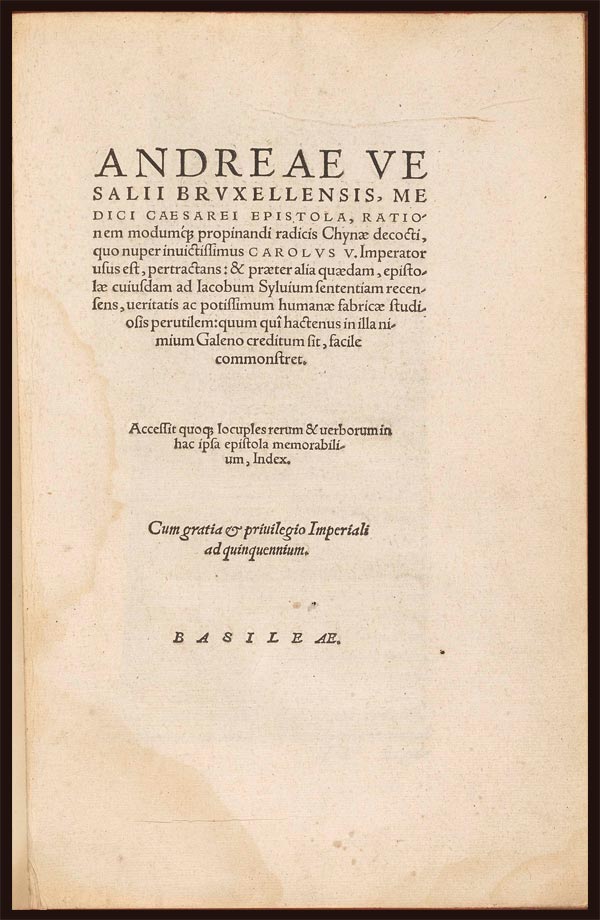China root (China smilax) had become a popular remedy to replace guaiac wood, a medication used to cure syphilis, muscle pain, and gout. In this brief treatise, Vesalius argues that there is no reason to replace guaiac. He unsuccessfully tried China root with the Emperor Charles V. But this discussion is very brief. In fact, Vesalius devotes most of this Epistola to defend the Fabrica against the criticism of the Galenists, including his former teacher at Paris, Jacobus Sylvius. Vesalius repeats his thesis that empirical knowledge should supersede written sources, including Galen, who performed dissections only on monkeys.
The Epistola
To zoom in, hover over the image with your mouse
Epistola Rationem modumque propinandi radices Chynae decocti, quo nuper invictissimus Carolus V. imperator usus est, pertractans Basel: Johannes Oporinus, 1546 The Le Roy Crummer Collection


